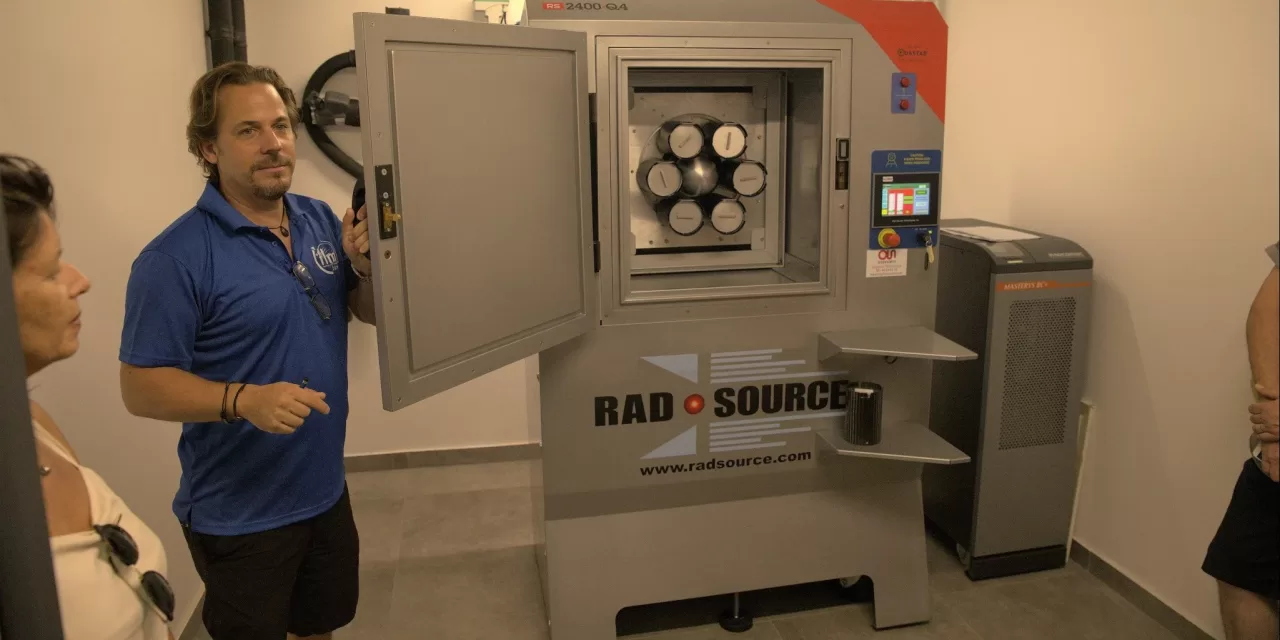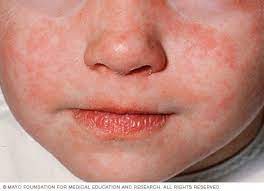
Jérôme Marie, a research engineer at the Institut Louis Malardé in front of a sterile insect irradiator
Credit: TDR/ Temoana
In 2020, TDR, IAEA and WHO published a guidance document for countries that have expressed interest in testing the SIT to target Aedes mosquitoes. Following an open call for proposals, four multi-country research consortiums (see table below) were selected to test SIT. With financial support from TDR and CDC, the Institut Louis Malardé in Tahiti, which is leading one of the selected research consortiums, is planning to release sterilized male mosquitoes in French Polynesia in November. Preparations include training of personnel on breeding and sterilizing the mosquitoes, engaging the local community to accept the field trial, and organizing data collection plans.
“The Sterile Insect Technique offers an innovative approach to controlling mosquitoes that transmit dengue,” said Dr Hervé Bossin, the principal investigator at Institut Louis Malardé. “We find it to be a promising alternative to other methods such as insecticides, as mosquitoes are developing resistance to them.”
About half of the world’s population is now at risk of dengue, with an estimated 100–400 million infections occurring each year and the effects of climate change are expanding its transmission even further. There is no specific treatment for dengue, and prevention and control efforts depend on targeting mosquitoes that transmit the disease. The WHO Regions of the Americas, South-East Asia and Western Pacific are the most seriously affected, with Asia representing around 70% of the global disease burden.

While funding has been secured for the French Polynesia/Cook Islands/Easter Island research consortium, additional funding is being sought to support the remaining three research groups.
Success of the Sterile Insect Technique against pests
SIT was first developed by the U.S. Department of Agriculture and has been used successfully in the past 60 years to target insect pests that attack crops and livestock, such as the Mediterranean fruit fly, the New World screwworm fly and the tsetse fly. It is currently in use globally in the agriculture sector on six continents.
A 16-year programme has shown that SIT has successfully eradicated the tsetse fly in a 1 000 km2 area in Senegal without harming other insects, eliminating the risk of animal trypanosomiasis for cattle.
“Given the long history of farmers using SIT to target pests, we see great potential in applying this technology to alleviate the burden of mosquito-borne diseases in humans,” said Dr Randall Nett, Chief of the Arboviral Diseases Branch at CDC.
Community acceptance is a key part of implementing SIT
Local communities that would benefit from the dengue control method if it is proven fully effective will be involved in vector control and mosquito surveillance activities, and knowledge will be transferred progressively for sustained mosquito monitoring within the community. Researchers are working to develop detailed communications plans in collaboration with the Health Promotion unit of the Ministry of Health in French Polynesia to inform and engage the local population to support trust building and acceptance of SIT.
“As this is an innovative approach to controlling dengue, we must ensure that the community here in Tahiti understands that SIT is a safe and effective technology,” said Dr Jérémy Bouyer, a medical entomologist at IAEA.
Countries share experiences on implementing experimental SIT against mosquitoes
Last week, scientists from 18 countries and representatives from TDR, IAEA, CDC and WHO’s Global Neglected Tropical Diseases (NTD) Programme participated in a workshop in Tahiti to discuss the design and implementation of SIT test plans in their countries and measuring the impact. Several countries have already conducted pilot tests, though data has not been collected on the human impact.
“The exchange of information among countries to overcome challenges and barriers to implementing this innovative technology will contribute to the success of this global initiative,” said Dr Florence Fouque, lead scientist for the project at TDR.
Challenges discussed during the workshop included breeding and sterilizing billions of mosquitoes, monitoring their flying ability and mating competitiveness, releasing them from the ground or with the use of drones, community acceptance of the field trial, and collecting data on the human impact on dengue transmission.
In French Polynesia and Cook Islands, measuring the impact will include sampling 600 adults randomly selected in the intervention and control sites to test for dengue antibodies when the sterile male mosquitoes are released and six months later. In addition to this epidemiological data, the impact of SIT on insect species other than Aedes mosquitoes will also be tracked.
“Given the limitations of existing methods of controlling the growing global threat of dengue, we are happy to see the deployment of SIT here in French Polynesia and hope further funding will become available to support large-scale field trials in more countries,” said Dr Raman Velayudhan, a scientist at WHO’s Global NTD Programme.












